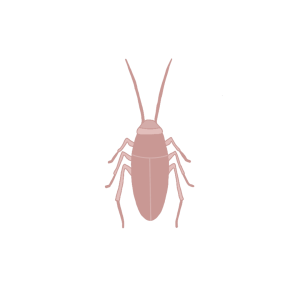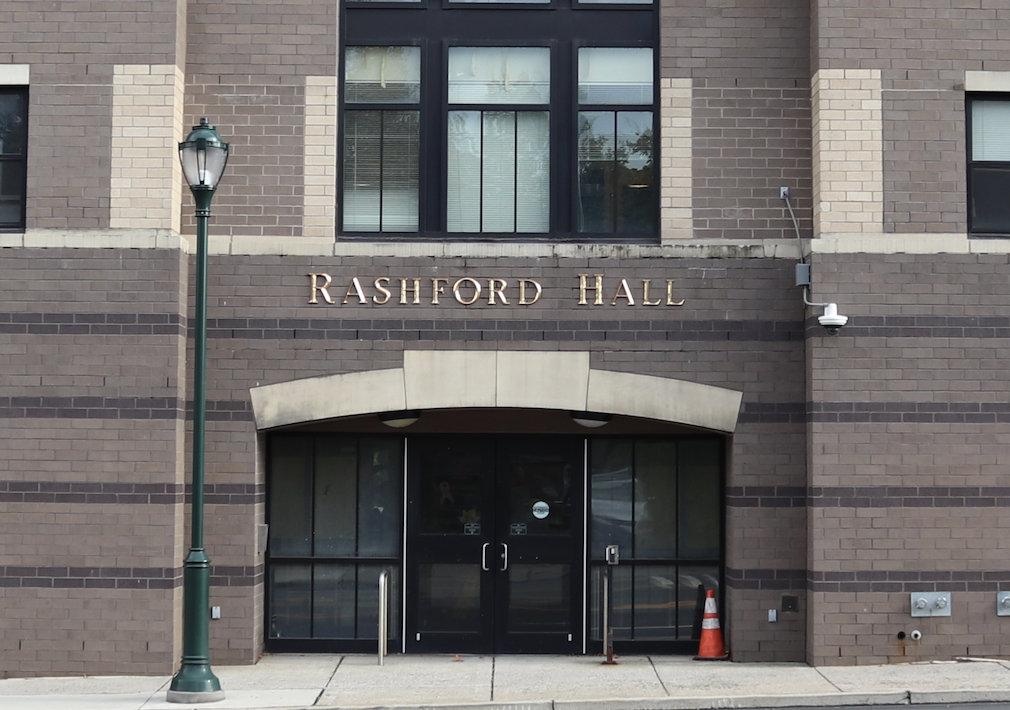Chris Sletvold ’26 didn’t plan to start his sophomore year as the “designated killer” of cockroaches in his Rashford Hall apartment.
When Sletvold, an orientation leader, moved in early to help with move-in weekend, he said he saw a few roaches and killed them and didn’t think much of it.
“But as my other roommates moved in, and as we started really being active, there was more food in the apartment, we were cooking more stuff, we were putting more down the drain, we were using the sink more. As that started to happen more, we started seeing a whole lot more [roaches],” Sletvold said.
All told, Sletvold said they counted up to 50 roaches in their apartment in the first three weeks of the semester.
Soon, the roaches were the talk of Rashford, and a Facebook group for parents of St. Joe’s students.
On Aug. 30, Jessica Moran-Buckridge, Ed.D., associate dean of residence life, sent out an email to impacted residents, explaining how to handle the situation and offering some proactive steps to improve the situation, like cleaning up clutter and keeping food in air-tight containers.
One of Sletvold’s roommates, Kenneth Chang ’26, said he quickly realized all of the places that the roaches could hide. An apartment-wide search became part of his daily routine.
“Every time I come home or every time I wake up, I’ll just do a search of all the corners, all the nooks and crannies and everything and look for roaches,” Chang said. “And that has led to me becoming very proactive and killing and finding these roaches.”
Moran-Buckridge said she and the Office of Residence Life “believe that low building utilization over the summer may have led to this initial increase.”
According to Sletvold, Facilities staff said a combination of new plumbing, construction in the area and the use of the water pipes after a summer of inactivity are also possible reasons for the roaches.
Cockroaches are the most common pest all over the world. In the United States, over 14 million households reported having roaches between 2020 and 2021, according to the American Housing Survey, conducted by the U.S. Census Bureau every two years. They thrive in warm and humid climates. The start of the fall semester was a steamy one in Philadelphia.
They also thrive in places like residence halls. Roaches are not uncommon in buildings that house many occupants, said Jonathan Wilson, deputy director of the National Center for Healthy Housing. And when rooms in residence halls are clustered together, roaches leave one room and just go to the next.
The Office of Residence Life advises students who experience roaches and other pest-related issues to submit a work-order through Asset Essentials, the university’s work request system.
“The university contracts with a pest-control and extermination company that provides regular preventative and targeted response treatments for any pest issues,” said Moran-Buckridge in a written response to The Hawk. “Work-orders submitted directly by students are the best way to provide the exterminators with detailed information that assists them in developing the best treatment plan for any pest issue.”
Sletvold said he submitted an online ticket with Facilities when he realized the cockroaches were an issue, and someone from Facilities responded to the issue within 24 hours.
Specific treatment varies depending on each situation, and is monitored daily, said Ken Ogawa, executive director of Facilities Management.
“In general, the impacted areas are cleaned, water is flushed down the drains, traps are set to catch and monitor levels and industry standard products are used to mitigate further issues,” Ogawa said in a written response to The Hawk. “These treatments take up to about a week to see full effect.”
Not only are roaches notoriously hard to kill, but they also pose health risks to those with asthma, Wilson said.
“They leave behind their scat, or feces, and it actually is an irritant for people with asthma,” Wilson said. “And if you have high enough levels of roach droppings or whatever is left behind by the roaches, it actually can trigger asthma attacks.”
After several visits by Facilities staff to their Rashford apartment, neither Sletvold nor Chang have seen a roach in their Rashford apartment.
“I was really grateful that Facilities was able to be so active and be helpful in helping us get rid of them,” Sletvold said. “They were lifesavers in this.”
Sletvold encourages other students who are experiencing this issue to reach out to Facilities to help.
“If you reach out to facilities, you go through the proper channels, there will be people and resources there to help you,” Sletvold said.

How to keep roaches away:
- Wipe down all food prep surfaces in your space
- Store food in sealed containers
- Wash and dry all dirty dishes
- Sweep floors daily
- Empty trash cans regularly
- Vacuum floors and carpets
- Avoid leaving wet towels and clothes on the floor
- Report roach sightings in the Nest using Asset Essentials
GRAPHIC: MINDY CHOI ’25/THE HAWK















































2026 mom • Sep 21, 2023 at 11:12 am
Odd. My daughter and her suite and other suites on her floor have not seen one roach since they moved in.